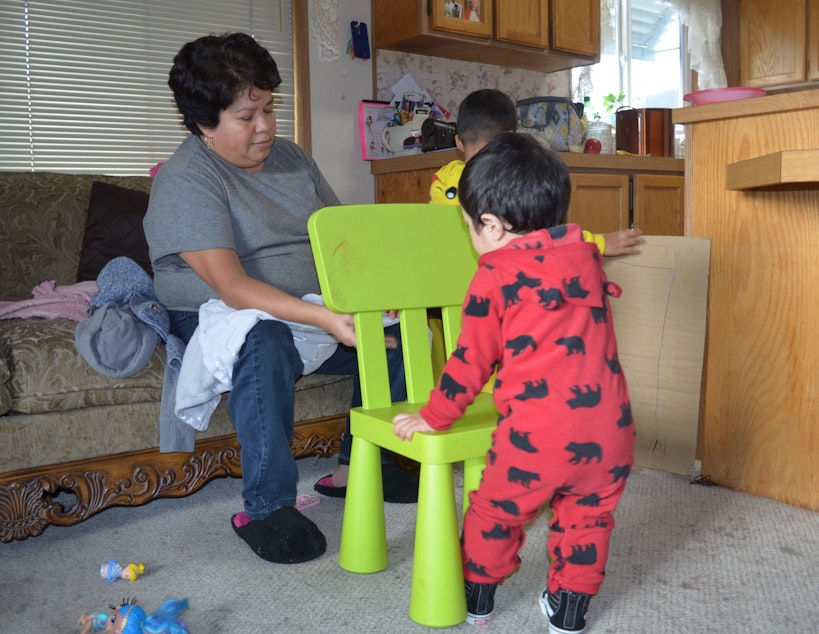These Latina moms wanted to prevent asthma. They started with daycares

When Araceli Martínez and her husband moved to the U.S., it was winter, and they lived with their newborn son in a trailer that didn't have insulation.
"First, he got a flu and a fever," Martínez said in Spanish. "He coughed and coughed and coughed till his face turned purple. He didn't get better until they told me he had asthma."
Ten percent of people in Washington state have asthma. The rates are higher for African-American, Latino, and poor communities. Those groups also have more hospitalizations and emergency room visits due to asthma. That's why a group of moms in Tacoma took on this problem, starting with telling daycare workers how to keep spaces free of asthma triggers.
Araceli Martínez and her family no longer live in that trailer. They moved to a double-wide in a trailer park southeast of Tacoma.
Now that her own kids are in school, Martínez runs a small daycare out of her home. Today, she's caring for three children under the age of 3.
Martínez said she didn't know what could trigger an asthma attack when she started the daycare.
Sponsored
"I really liked aromatic candles," she said. "And I used a lot of bleach. I'd empty the whole gallon to make things really clean."
Those could trigger asthma, said Sally Findley, a professor at Columbia University's Mailman School of Public Health.
"Many of the things that trigger asthma in the home are also present in the daycare," she said. "You're going to have some of the same problems with cockroaches and mold. Stuffed animals and blankies can get pretty dusty. You really shouldn't be using Clorox."
Findley said daycare providers want to get rid of asthma triggers. It's just that, usually, no one tells them how.
Community health workers give asthma education and inspections to some daycares in Seattle, but daycares in the rest of King County and in all of Pierce County get nothing.
Sponsored
Findley said that's a missed opportunity.
"If you create a good, clean daycare center, it helps a lot of kids," she said. "The ages from 2 to 5 is exactly when asthma starts."
That's where the group of moms in Tacoma comes in. They call themselves "Mujeres Latinas Apoyando La Comunidad"--"Latina Women Supporting the Community"-- and they've been meeting monthly at a McDonald's to brainstorm how to fight asthma in their community. They started with daycares.
"There were 10 of us, and we broke up into groups of two or three to go to different daycares," Elsa Trujilio, one of the moms, said in an interview in Spanish.
In each daycare, the moms surveyed the conditions and then gave the daycare providers advice about how to improve.
Sponsored
"One I went to was very small, and the windows were always closed," Trujilio said.
She said she told the provider, "Look, you have to open the windows every day for half an hour, for ventilation. And, if you're cleaning while the children are sleeping, you have to open the windows."
Trujilio said the provider hadn't known about these things, so she thinks her advice helped.
The Tacoma program wasn't large enough to measure its impact, but similar programs in New York and Florida have reduced asthma hospitalizations among toddlers.
Back at Araceli Martínez's daycare, she said she changed the way she does things after talking to the group of moms.
Sponsored
"Now I wash the sheets and stuffed animals regularly, because they can accumulate a lot of dust,"she said. "And I use organic cleaning products. And, when I use bleach, I measure out small amounts."
Martínez added that none of the kids in her daycare have had asthma the way her son did — and, today at least, they do seem pretty happy. Two-year-old Javier is building a house out of child-sized chairs and sheets of cardboard that are bigger than he is.
"That's my house over there," he said in Spanish.




